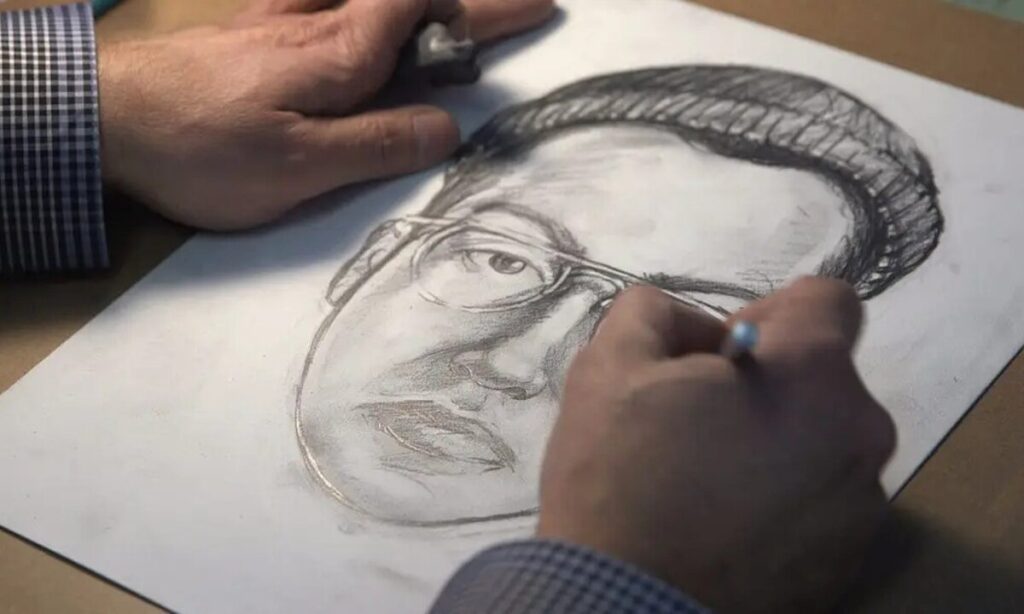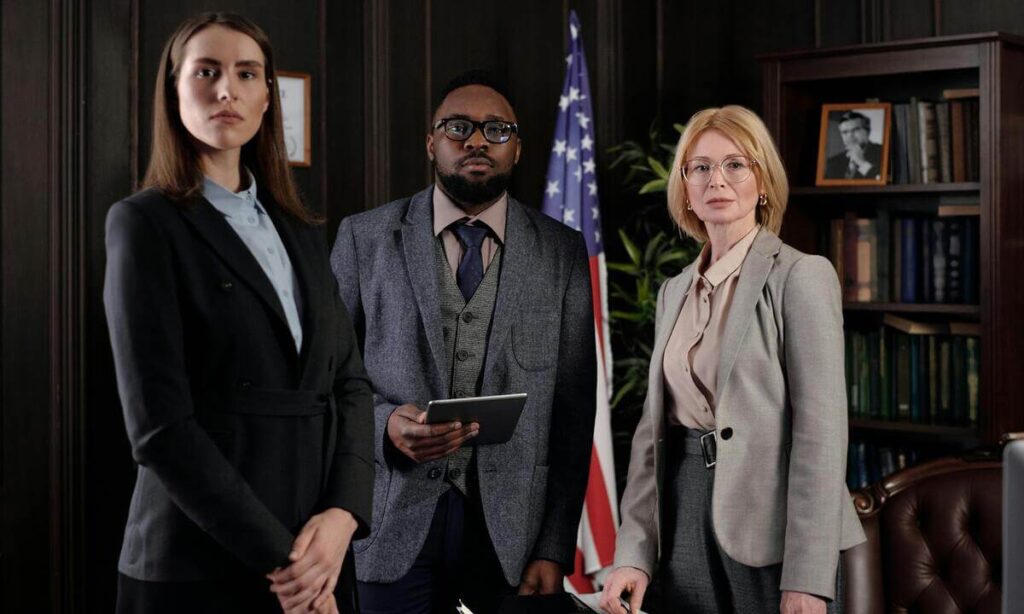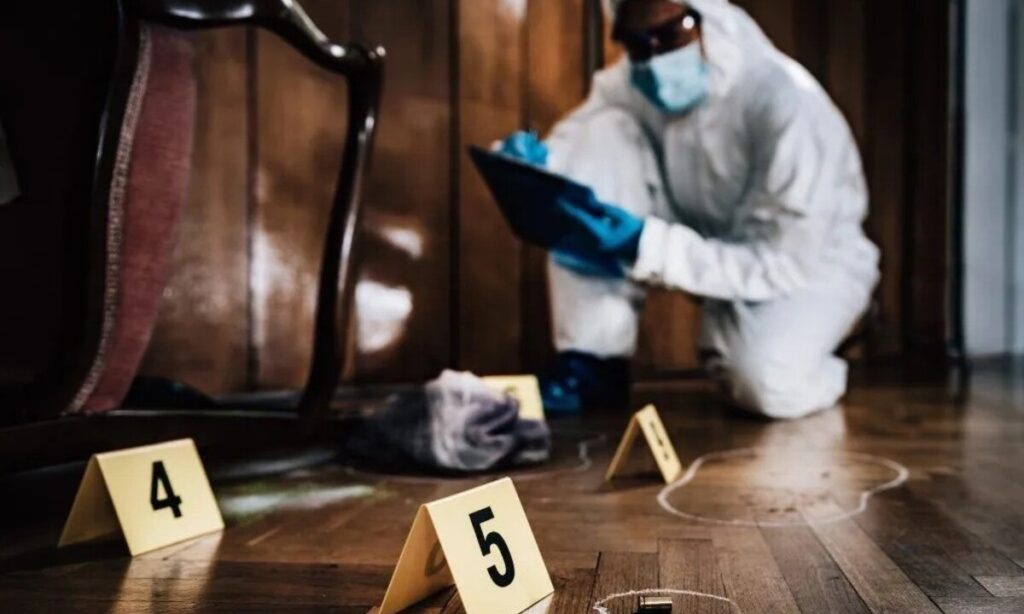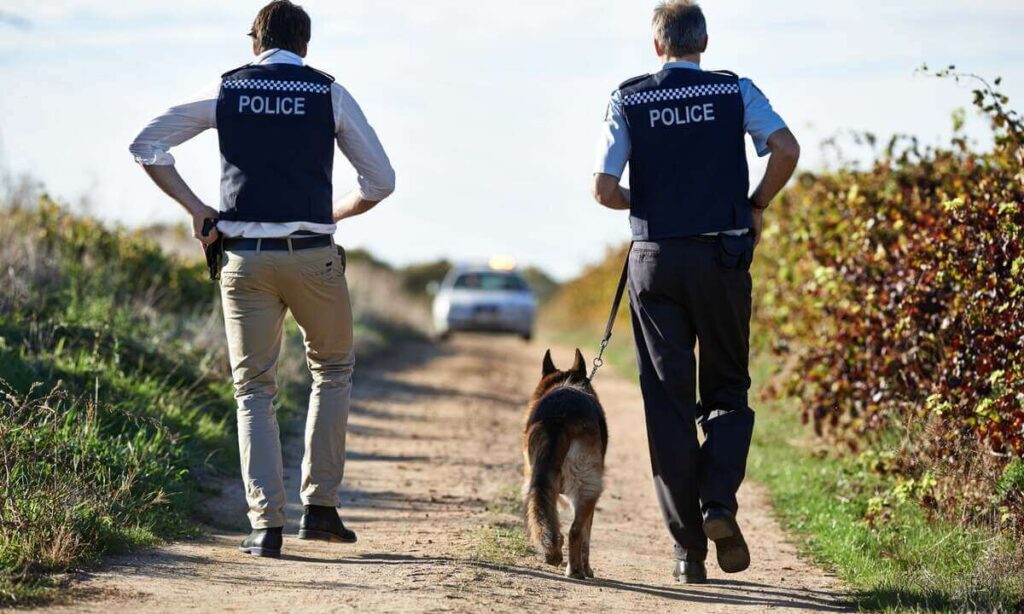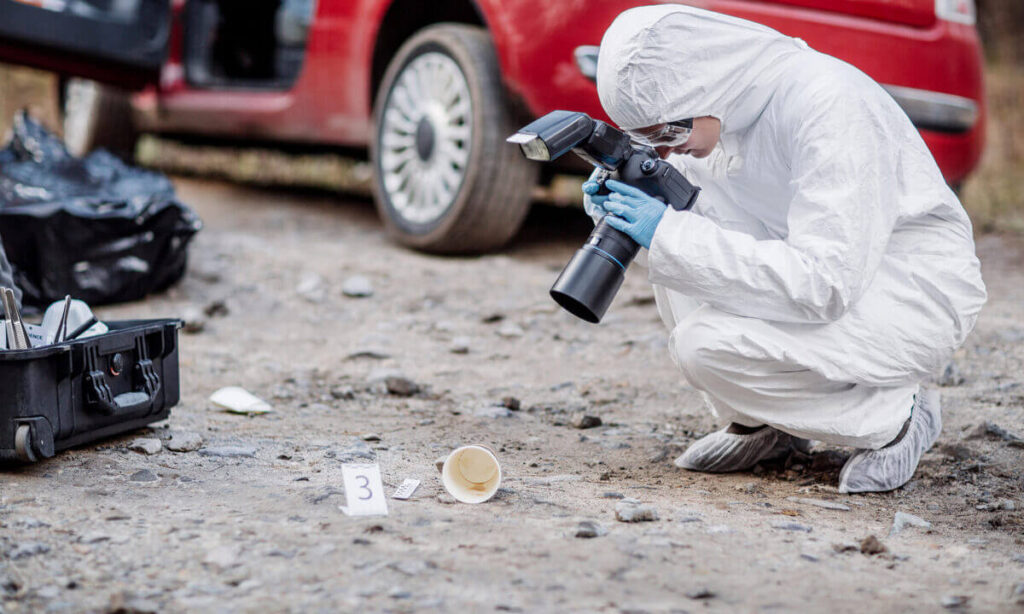Forensic art is an intriguing area that merges artistic abilities with investigative methods to aid in solving crimes. Utilizing artistic skills to produce facial reconstructions, composite sketches, and other visual depictions of suspects or victims is a key aspect of working as a forensic artist. These innovations play a crucial role in identifying and capturing criminals, while also providing closure to families and victims.
What Do Forensic Artists Do?
Utilizing their artistic skills, forensic artists aid in criminal investigations. Utilizing their expertise, they craft facial reconstructions of unidentified human remains, age-progressions of missing persons, composite sketches of suspects based on eyewitness descriptions, and visual representations of crime scenes. Visual aids play a crucial role in assisting investigators and the public in identifying and capturing criminals.
Forensic artists collaborate extensively with law enforcement agencies, medical examiners, and forensic anthropologists to collect information regarding the case. Examining photographs, witness statements, and other evidence is crucial for accurately reconstructing the physical features of individuals or crime scenes. Expertise in human anatomy, facial proportions, and transforming 2D images into 3D representations is essential for their work.
Skills and qualifications needed to become a forensic artist
Success as a forensic artist requires a blend of artistic skill, meticulousness, and composure in high-pressure situations. Below are key skills and qualifications you need to have:
1. Artistic skills
Having a solid understanding of traditional art techniques like drawing, painting, and sculpture is essential for a forensic artist. One must possess the ability to accurately represent facial features, body proportions, and other intricate details. Proficiency in computer software for digital art and facial reconstructions is strongly recommended.
2. Knowledge of anatomy
Having a solid grasp of human anatomy is essential for producing precise facial reconstructions and composite sketches. It is important to have a strong understanding of facial muscles, bone structure, and their impact on a person’s overall appearance. Acquiring this knowledge will enable you to develop lifelike representations that can be valuable in criminal investigations.
3. Strong communication skills
Forensic artists frequently collaborate with witnesses, victims, and law enforcement authorities. Effective communication with individuals from diverse backgrounds is crucial to ensure a comfortable interview experience. Effective listening skills and empathy are crucial for establishing trust and enhancing the precision of visual depictions.
Steps to becoming a forensic artist
To become a forensic artist, one must acquire a blend of academic knowledge, practical skills, and real-world practice. Below are the steps you can follow to start on this fulfilling career journey:
1. Education Requirements
Developing a career as a forensic artist requires a solid background in art and proficient drawing abilities. Having a formal education in art is not always necessary, but it can greatly improve your prospects in this field. Exploring a degree in fine arts, illustration, or forensic art could be beneficial. These programs are designed to equip you with the essential knowledge and skills needed to succeed as a forensic artist.
Aside from art classes, it’s crucial to have a strong grasp of anatomy and facial characteristics. Enroll in courses on anatomy, portraiture, and forensic science to develop a thorough grasp of the human face and its responses to aging, trauma, and ethnicity.
2. Training Program
After finishing your education, the next stage involves specialized training in forensic art. Numerous institutions and organizations provide forensic art training programs that concentrate on instructing the specific techniques and skills necessary for this field.
One program worth mentioning is the Forensic Artists Training Program (FATP) provided by the International Association of Identification (IAI). This program encompasses a variety of subjects such as composite sketching, age progression, post-mortem reconstruction, and facial approximation. Finishing a reputable training program such as this will not only improve your skills but also establish your credibility as a forensic artist.
Tools and techniques used in forensic art
Forensic artists utilize a range of tools and techniques to craft their visual representations. Presented here are some of the most frequently utilized ones:
1. Composite sketching
Creating a visual representation of a suspect through composite sketching is done by gathering information from witness descriptions. Forensic artists utilize their artistic abilities and details given by witnesses to produce these sketches. One option is to utilize traditional drawing materials or digital software to enhance the sketch.
2. Facial reconstruction
Reconstructing facial features involves utilizing skeletal remains to recreate the appearance of an individual. Forensic artists utilize their understanding of anatomy and artistic abilities to craft a three-dimensional representation of the individual’s face through sculpting or digital techniques. This method is extremely useful for identifying unidentified victims or suspects.
3. Age progression
Age progression involves creating updated images of missing persons to depict how they might appear years after their disappearance. Forensic artists utilize a combination of family traits, lifestyle choices, and the natural aging process to generate these images. Advancements in age progression techniques have been instrumental in locating missing individuals and providing closure to their families.
The importance of accuracy and attention to detail in forensic art
Forensic art requires a meticulous focus on precision and detail. Minor variations in facial features or crime scene portrayals can greatly impact an investigation. Working as a forensic artist requires meticulous and precise attention to detail to maintain the integrity of the evidence.
In order to attain such a high level of precision, forensic artists need to consistently enhance their skills through practice and continuous education. Remaining current with technological advancements and forensic techniques is crucial. Highlighting precision and meticulousness in your work can help you establish a reputation for being dependable and knowledgeable in the industry.
Career opportunities for forensic artists
Forensic artists have opportunities for employment in a range of organizations such as law enforcement agencies, medical examiners’ offices, and private forensic consulting firms. They might work either full-time or part-time, depending on the need for their services.
Specializing in a specific area, like composite sketching or facial reconstruction, is an option for forensic artists. Specializing can lead to opportunities to work on high-profile cases or become a well-known expert in the field.
Forensic artist salary and career outlook
Forensic artists’ salaries may fluctuate based on various factors like experience, location, and the employing organization. As per the Bureau of Labor Statistics, the median annual wage for forensic science technicians, including forensic artists, stood at $63,740 as of May 2022. It is crucial to consider that salaries can vary greatly, as seasoned forensic artists can make six-figure salaries.
Forensic artists have a promising career outlook, with job opportunities projected to increase at a rate higher than the average for all occupations. With the continuous advancement of technology, there is a growing need for proficient forensic artists who can effectively use digital tools and techniques.
FAQs
Where do forensic artists work?
Forensic artists have the opportunity to work in a range of different environments. They are often employed by law enforcement agencies to aid in criminal investigations, collaborating closely with detectives and other forensic experts. Forensic artists have the option to work independently, offering their expertise to various organizations or operating under contract agreements. Certain forensic artists opt to work in academic or research institutions, contributing to the advancement of new techniques and technologies in forensic art.
Who is the best forensic artist?
Forensic art is a rich field with many skilled individuals who have made important advancements. Identifying a singular top forensic artist proves challenging due to the distinct styles and expertise each artist possesses. Notable forensic artists who have left a lasting impression are Frank Bender, renowned for his facial reconstruction expertise, and Karen T. Taylor, known for her composite sketching abilities. It’s important to keep in mind that the field of forensic art is always changing, with new artists introducing fresh techniques and methods.
Conclusion
Choosing to pursue a career as a forensic artist can be highly fulfilling for individuals who have a strong interest in art and a drive to impact the field of criminal investigations. Through refining your artistic abilities, developing a strong grasp of anatomy, and obtaining the required education and training, you can set off on a journey that merges your love for art with the quest for justice.
To pursue a career as a forensic artist, start by obtaining a formal education in fine arts or a related field. It is advisable to explore training programs and internships that offer practical experience and guidance from seasoned forensic artists. By demonstrating commitment and persistence, one can develop the necessary skills to excel as a forensic artist, aiding in crime resolution and providing solace to affected individuals.
Did you find this article helpful? Check out this article on How To Become a Forensic Scientist: A Complete Guide. For more articles, visit our website. Thank you for reading!
